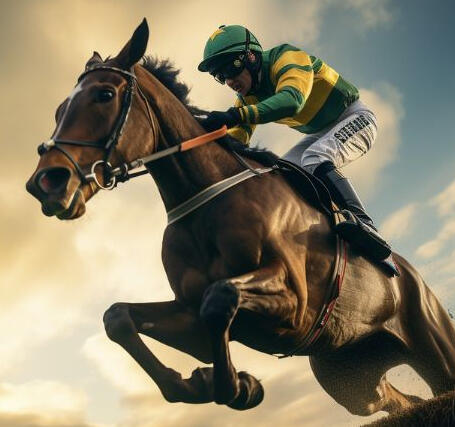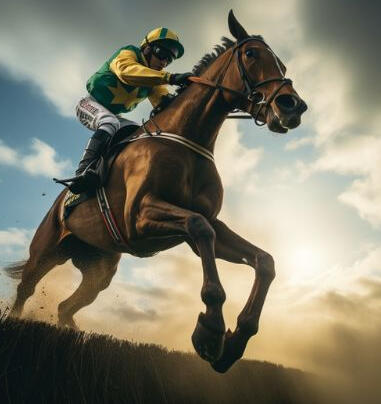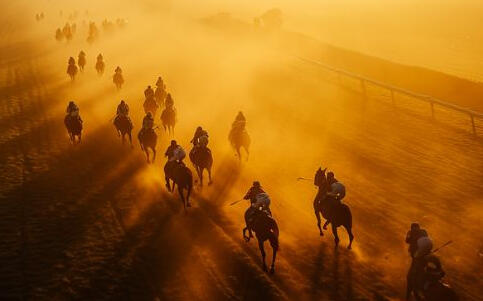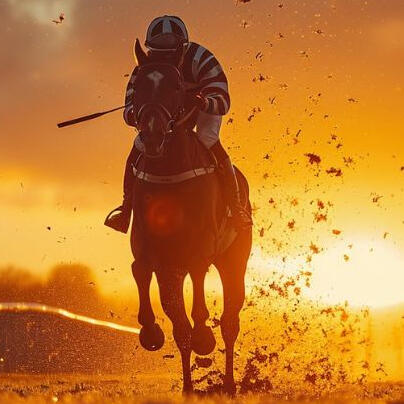
HORSE RACING
Field Size
Mastering the Field: How Size Shapes the Strategy and Spectacle of UK and Irish Horse Racing.
Introduction
In the world of horse racing, field sizes hold a significance that goes beyond mere numbers.They are a critical aspect that affects everything from the betting odds to the strategies adopted by jockeys and trainers.In this blog post, we will look into the fascinating dynamics of field sizes in UK and Irish horse racing, with a special focus on iconic races such as the Grand National, Epsom Derby, Cheltenham Gold Cup, Welsh Grand National, and Irish Grand National.Understanding the intricacies of field sizes can provide bettors and racing enthusiasts with valuable insights, enhancing their engagement with the sport and potentially leading to more informed betting decisions. Join us as we explore the minimums and maximums, their impact on betting, and place payouts, shedding light on a crucial yet often overlooked aspect of horse racing.
Understanding Field Sizes
At its core, the field size in horse racing refers to the number of horses that participate in a race.This number isn't arbitrary; it's carefully considered and controlled by race organizers for a variety of reasons, including safety, competition level, and betting dynamics.The significance of field sizes extends to every corner of the racing world, influencing not just the excitement of the race but also the strategic decisions made by trainers, jockeys, and bettors alike.The Determinants of Field SizesSeveral factors contribute to the determination of field sizes in horse racing. These include:Track Size and Safety: Smaller tracks or those with challenging terrains limit the number of horses that can safely compete.Race Prestige and Type: High-stakes races often have larger fields to increase competition, whereas specialized races might limit participants to maintain a niche appeal.Regulatory Limits: Racing authorities set minimum and maximum field sizes to ensure fairness and safety. These limits can vary by racecourse and the type of race being run.Understanding these determinants is crucial for anyone involved in the racing industry, from the organizers who plan the events to the bettors who stake their claims on the outcomes.
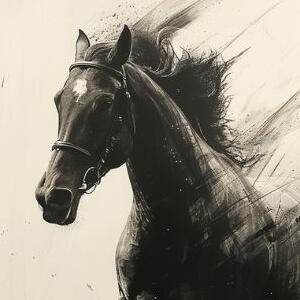
tn the realm of UK and Irish horse racing, field sizes are bound by certain minimums and maximums, established to balance competitiveness with safety.These limits vary widely across different races and tracks, influenced by a multitude of factors.General LimitsTypically, flat races tend to have larger field sizes compared to jump races, owing to the nature of the tracks and the inherent risks involved.For instance, flat races can often accommodate up to 20 horses or more, while jump races, including those with hurdles or steeplechases, might limit fields to around 16 to 20 horses, depending on the specific course and race conditions.Influencing Factors
Several key factors influence the minimum and maximum field sizes in horse racing:Track Size and Configuration: Larger tracks can safely accommodate more horses, while tighter tracks with sharp turns or complex jump configurations require smaller fields.Race Type and Category:Prestigious races, aiming to attract top talent, might set higher minimum field sizes to ensure a competitive lineup. Conversely, races designed for novice horses or those with specific conditions might have stricter maximums to limit the field.Safety Considerations:The paramount concern in setting field sizes is the safety of both the horses and their riders. Courses with challenging features or those prone to adverse weather conditions may enforce stricter limits.Betting Dynamics: Larger fields offer more betting options and higher potential payouts, making them attractive to bettors.However, too large a field can make handicapping exceedingly difficult, potentially deterring casual bettors.Understanding these limits and the rationale behind them can significantly enhance one’s appreciation of the sport and its intricacies, especially when considering the impact on betting strategies and the overall excitement of the race.

Spotlight on Major Races: The Grand National
The Grand National stands as a colossus in the world of horse racing, not just in the UK but globally.This steeplechase, held annually at Aintree Racecourse in Liverpool, England, is renowned for its challenging course, which includes iconic fences like Becher's Brook and The Chair. The race's prestige is matched by its field size, which plays a crucial role in its unpredictability and excitement.Field Size and Its SignificanceThe Grand National typically sees a maximum field size of 40 horses, one of the largest in jump racing. This extensive field size is a hallmark of the race, contributing to its unpredictability and the wide array of betting opportunities it presents. The large number of runners increases the difficulty of picking a winner, hence elevating the odds and potential payouts for bettors.Betting ImplicationsWith such a large and competitive field, the Grand National is a prime target for bettors seeking high-value bets. The complexity of the race, combined with the challenging course, means that upsets are common, and longshots frequently outperform expectations.This environment creates a fertile ground for value betting, where skilled bettors can find high odds on horses that have a realistic chance of performing well, despite not being among the favorites.The race's unpredictability also affects place betting, with bookmakers typically offering payouts on more places than usual due to the large field size.This aspect allows bettors to strategize around placing wagers on horses to finish in the top four, five, or even six, providing a cushion against the unpredictability of the race outcome.Historical ContextThe Grand National has a storied history, with its large fields often leading to legendary tales of underdog victories and dramatic finishes.These stories not only add to the lore of the race but also exemplify the impact of field size on the dynamics of horse racing.The spectacle of 40 horses charging towards the first fence is a sight unique to the Grand National, making it a quintessential example of how field sizes can elevate a race into a national, if not global, event.
Spotlight on Major Races: The Epsom Derby
The Epsom Derby, often simply known as "The Derby," is one of the most prestigious flat races in the world, held annually at Epsom Downs Racecourse in Surrey, England.It is a Group 1 race for three-year-old thoroughbred colts and fillies, and it's part of the British Triple Crown. The Derby stands out not just for its rich history and prestige but also for the way its field size impacts the racing dynamics and betting landscape.Field Size DynamicsWhile the field size for the Epsom Derby can vary, it typically features a lineup of 12 to 20 horses. This size strikes a balance between being large enough to ensure a competitive race and small enough to mitigate the risks associated with overcrowded fields.The Derby's challenging course, with its undulating terrain and the famous Tattenham Corner, further accentuates the importance of field size.A smaller, more manageable field helps ensure that the race's inherent challenges come from the course and competition, rather than from navigating a crowded field.Betting ImplicationsThe relatively moderate field size of the Epsom Derby influences betting strategies in several ways. Firstly, it tends to concentrate betting interest on a smaller number of favorites, as bettors feel they have a better chance of evaluating the true form of each horse without the unpredictability of a larger field.However, this does not mean that upsets are uncommon. The Derby's history is rich with long-shot winners who defied the odds, rewarding those bettors who looked beyond the favorites.Additionally, the place betting market in the Derby is particularly appealing. With fewer horses to contend with, the chances of a horse finishing in a paying position are perceived to be higher, albeit with slightly lower payouts than one might find in races with larger fields.This dynamic encourages a more strategic approach to betting, where knowledge of a horse's pedigree, training, and previous performance on similar courses can provide a critical edge.Historical SignificanceThe Epsom Derby's storied history is filled with memorable races that have helped to cement its status as a cornerstone of British horse racing. Its reputation as a test of both speed and stamina, coupled with the natural amphitheater of Epsom Downs, makes it a spectacle unlike any other.The race has a knack for highlighting exceptional horses, trainers, and jockeys, many of whom have gone on to achieve legendary status within the sport.
Conclusion
Field sizes in horse racing are far more than just a number; they are a crucial element that shapes the very nature of each race.Understanding the nuances of field sizes offers bettors, trainers, and racing enthusiasts alike a deeper appreciation of the sport, enabling more informed decisions and strategies.Whether it's the thrill of the Grand National's large field or the strategic betting opportunities presented by the more moderate fields of the Epsom Derby, each race brings its unique charm and challenges.For bettors, the insights gained from understanding how field sizes affect odds, payouts, and race dynamics can be invaluable.It empowers them to craft more nuanced betting strategies, taking into account not just the horses and their form but also how the size of the competition can sway the race's outcome.Races like the Cheltenham Gold Cup and the Welsh and Irish Grand Nationals highlight the diversity of field sizes across major events, each contributing to the rich tapestry of horse racing in its own way. These races remind us that at the heart of every thrilling finish, strategic bet, and legendary victory, the size of the field plays a pivotal role.As we continue to enjoy the spectacle of horse racing, let's appreciate the complex interplay of factors that make it such a captivating sport. Understanding field sizes is just one aspect, but it's one that offers a window into the strategic depth and historical richness of horse racing.

